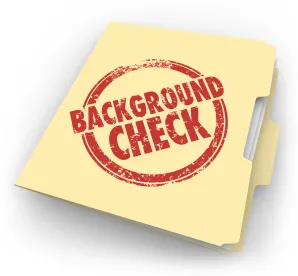The disclosure requirement of the federal Fair Credit Reporting Act (FCRA) remains one of the most contentious and expensive litigation areas for employers. The case law from various federal district courts has been a mixed bag, leaving employers to question what it means to provide a “clear and conspicuous” disclosure in a writing that “consists solely” of the disclosure. Until last week, Syed v. M-I, LLC, No. 14-17186 (Ninth Circuit Court of Appeals, March 20, 2017) was the only federal court of appeals case opining on the federal FCRA’s “consists solely” requirement. The Ninth Circuit has weighed in on this issue for a second time, once again raising the standard required to meet the federal FCRA’s and the California Investigative Consumer Reporting Agencies Act’s (ICRAA) statutory requirements.
FCRA Disclosure Requirements
The FCRA requires employers that obtain consumer reports (also commonly referred to as background checks) on applicants and employees to (1) provide “a clear and conspicuous disclosure” that the employer may obtain such a report (2) in a document that “consists solely” of the disclosure, prior to obtaining a background check. The California ICRAA has the same requirements.
2017 Ninth Circuit Case: Syed
In March 2017, the Ninth Circuit held in Syed that the inclusion of a liability waiver (e.g., “I release the employer, the background check company, and any company/entity that provides information on me from any and all liability”) in a disclosure is unlawfully extraneous. This finding was consistent with those of several other district courts that found liability waivers to be unlawfully extraneous. While Syed made clear that the inclusion of a liability waiver in disclosures violated the FCRA’s “consists solely” requirement, it did not make clear whether the inclusion of all other extraneous information violates the FCRA.
2019 Ninth Circuit Case: Gilberg
On January 29, 2019, in Gilberg v. California Check Cashing Stores, No. 17-16263, the Ninth Circuit held that any “surplus” (i.e., extraneous) language in a background check disclosure is unlawful under the FCRA’s “consists solely” requirement. Gilberg also weighed in on the “clear and conspicuous” requirement, analyzing each word separately. The Ninth Circuit’s holding applies to both the federal FCRA and the California ICRAA because, as the court states, both laws have the same relevant requirements on these two points.
Factual Background
Desiree Gilberg applied for employment and completed a three-page employment application. Two weeks later, the employer-provided Gilberg with a separate document conspicuously titled “Disclosure Regarding Background Investigation.” The disclosure was a one-page document explaining that the employer may obtain a background check. It also contained space for Gilberg to authorize the background check, information about her rights under various state laws (most of which were not applicable to her), and other non-mandated disclosures. Gilberg provided her authorization, and the employer obtained her background check. She was subsequently hired and remained employed for five months. After voluntarily leaving her position, Gilberg filed a class action lawsuit alleging violations under the federal FCRA and the ICRAA.
On appeal, the Ninth Circuit opined on whether the disclosure satisfied:
-
the “consists solely” disclosure requirement; and
-
the “clear and conspicuous” disclosure requirement.
“Consists Solely”
Disclosure Separate from Employment Application
Gilberg argued that the employer presented her the three-page employment application, as well as the disclosure, in a single document totaling four pages. Thus, Gilberg argued, the disclosure was unlawfully intertwined with the three-page employment application and did not “consist[] solely of the disclosure.” The Ninth Circuit rejected that argument, holding that the three-page employment application and the disclosure were separate. Otherwise, the Ninth Circuit explained, if all documents provided to an applicant are considered the same document, it would be difficult for an employer to provide employment application materials at all without violating the FCRA’s standalone requirement.
Surplus Disclosure Language
The court also concluded the disclosure itself contained a number of different sets of unlawful surplus (or extraneous) language, including the following:
-
The applicant’s rights under various state laws (most of which did not apply to her)
-
A notice about background investigation
-
A summary of the applicant’s rights under the FCRA
Rejecting the holdings of some other courts, the Ninth Circuit reasoned that because the extra language was just as likely to confuse the applicant as to inform the applicant, it did not further the FCRA’s or the ICRAA’s purposes.
“Clear and Conspicuous”
Although both the FCRA and ICRAA require a disclosure to be “clear and conspicuous,” neither statute defines the phrase. Leaning on prior Fifth Circuit and Seventh Circuit interpretations, the court divided the phrase into “clear” and “conspicuous,” and analyzed each word separately. The court defined “clear” as “reasonably understandable” and “conspicuous” as “readily noticeable to the [applicant/employee]” under both the FCRA and the ICRAA.
The court found the disclosure “conspicuous” because it was readily noticeable to the applicant through the use of capitalized, bold, and underlined headings, noting the presentation made it easy for Gilberg to see what she was signing.
However, the court found that the disclosure was not “clear” for two reasons:
-
It contained “language that a reasonable person would not understand.”
-
It would confuse a reasonable person because the federal disclosure was combined with the applicant’s rights under various state laws.
Key Takeaways
-
Employers may want to review their background check disclosure and authorization screens/forms, including the presentation of those to applicants and employees, to ensure:
-
there is no surplus, extraneous language in the disclosure; and
-
the disclosure is clear and conspicuous.
-
-
Employers may want to review the online screens and/or paper forms provided by their background check companies before relying on them.





 />i
/>i
